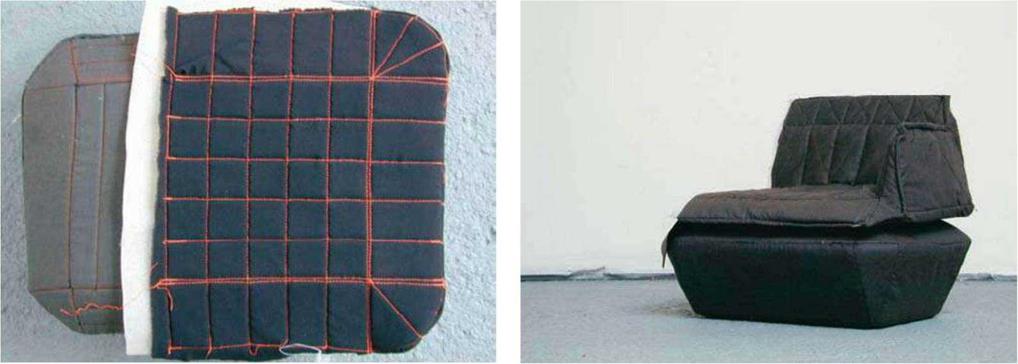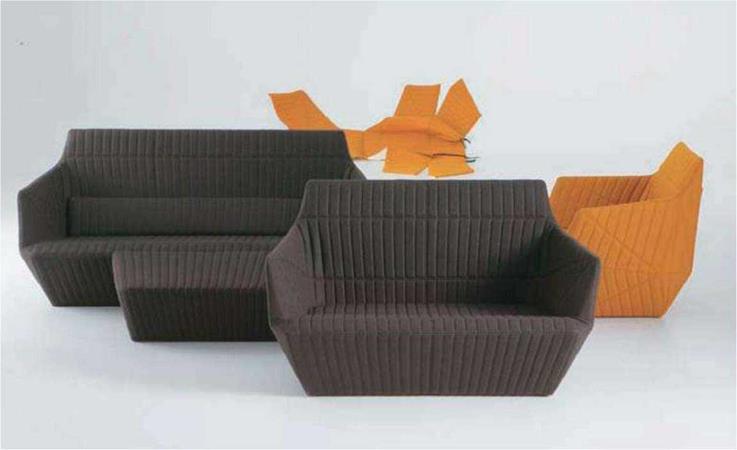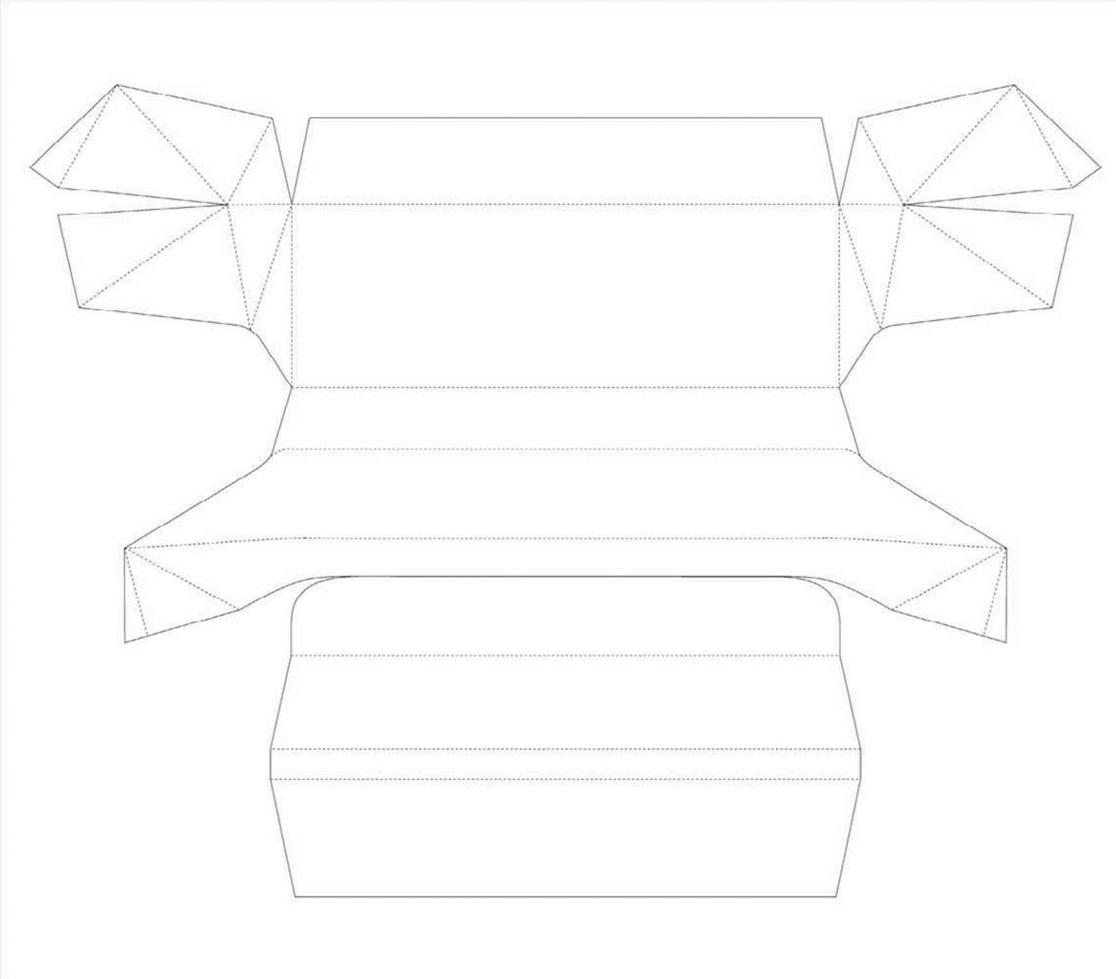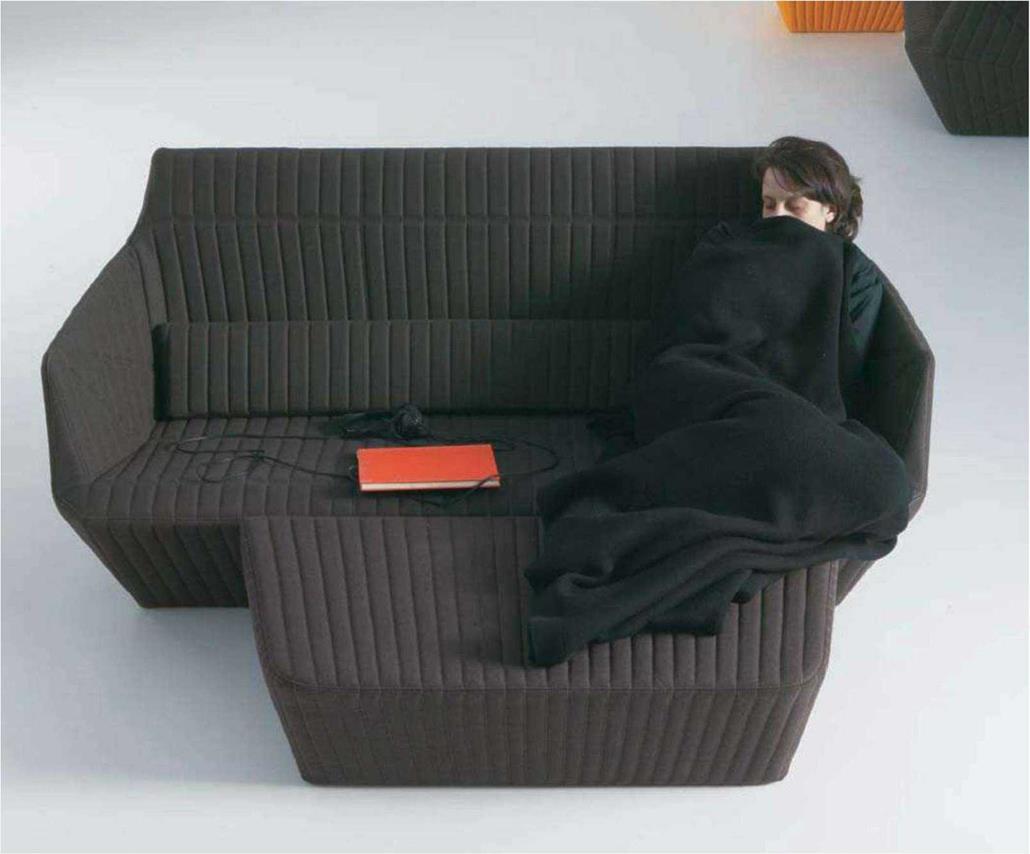 The machine to which he is referring was something he and his brother, Ronan, discovered on the factory floor at the furniture manufacturer Ligne Roset. “It was in the center of the factory and was a very big machine, and most of the time, I was just passing by and it was not being used,” Bouroullec recalls. “I asked what this machine wais.” It turned out to be an “incredible sewing machine” that makes mattresses. Ligne Roset is not generally in the business of making mattresses, but was using the machine approximately one week a month. Bouroullec found out that making mattresses “is an incredibly simple job for something that can do so much more.” The discovery of the machine coincided with, and made possible, an idea the brothers had for a new kind of sofa. “The idea was to make a full-form sofa,” he says. “It doesn’t have any visual structure. It’s just a shape covered by the fabric.” Once they discovered this machine, they had to dust it off and reconsider the potential of what they had in their midst. “They had to learn how to use and program it in a much more complex way,” Bouroullec says. “They even had to buy another part for the machine.”
The machine to which he is referring was something he and his brother, Ronan, discovered on the factory floor at the furniture manufacturer Ligne Roset. “It was in the center of the factory and was a very big machine, and most of the time, I was just passing by and it was not being used,” Bouroullec recalls. “I asked what this machine wais.” It turned out to be an “incredible sewing machine” that makes mattresses. Ligne Roset is not generally in the business of making mattresses, but was using the machine approximately one week a month. Bouroullec found out that making mattresses “is an incredibly simple job for something that can do so much more.” The discovery of the machine coincided with, and made possible, an idea the brothers had for a new kind of sofa. “The idea was to make a full-form sofa,” he says. “It doesn’t have any visual structure. It’s just a shape covered by the fabric.” Once they discovered this machine, they had to dust it off and reconsider the potential of what they had in their midst. “They had to learn how to use and program it in a much more complex way,” Bouroullec says. “They even had to buy another part for the machine.”
Making the Facett was a process of hands-on trial and error. “We made some really early drawings,” Bouroullec says, “kind of imprecise drawings of what we might want to do, and we made many small prototypes, but we didn’t really draw it. We went to prototyping quite quickly,” he notes. “Our first decision was to choose a fabric and use the sewing machine to make a kind of sandwich between fabric and foam,” Bouroullec says. “The sewing has two roles: when you repeat all the parallel lines on the surface of the sofa, you give much more stiffness to the fabric, so that the fabric/foam acts like cardboard. Sewing also makes a gap and can be used as a kind of folding line.”
They quickly discovered that there are unique challenges when you try to sew rather than build a piece of furniture. “The work became very precise, which is why I speak of clothing and tailoring,” Bouroullec says. “As soon as we had to make a transformation about the height of the seat, angle of back, or height—all the usual dimensions you adapt in prototyping to make it comfortable—every time we even had to make a two centimeter change, we had to redraw the entire clothes.” Eventually, they were able to create flat patterns, similar to those used by dressmakers, for each piece in the collection. “There are like thirty surfaces,” Bouroullec explains, “and all the surfaces came from one or two flat parts. Everything is flat like origami at first. Then, you make these lines that are rejoined with a second sewing process. At the end, we needed to have a perfect fit between the fabric/foam and the inside form of the sofa. The shape of the sofa is faceted, like a diamond,” he continues. “There are all these triangles and perfect geometrical shapes that all answer to each other.”

Top right: Early prototypes were made by hand to gauge the proportions needed to configure the geometry of the facets that give the furniture its unique look and feel. Credit: Paul Tahon and Ronan Bouroullec
(<£) Small paper models show exactly where the machine needs to sew lines for both quilting and folding of the fabric/foam material.
Credit: Paul Tahon and Ronan Bouroullec
Once all the dimensions and angles are worked out, a pattern not unlike those used to make clothing is created. Credit: Paul Tahon and Ronan Bouroullec


© A pattern for the Facett Sofa shows which stitching lines will also be fold lines, much like a piece of origami. Credit: Ronan and Erwan Bouroullec
© Each piece in the Facett collection is made with a quilted, tailored, zippered cover of foam and fabric, which can be removed for cleaning.
Credit: Paul Tahon and Ronan Bouroullec
Opposite: The complete line of Facett furniture can be used together for modular versatility and flexibility, especially in small spaces.
Credit: Paul Tahon and Ronan Bouroullec

The most challenging aspect of the manufacturing process was creating the arms. “It was interesting to manage with the design of the armrest, to make it in such a small dimension,” Bouroullec says.
Once made, these quilted “clothes” fit precisely over a wood and plastic internal structure. “You can take the cover off to wash it,” Bouroullec notes. “It’s very practical. There are two zippers on the back to remove it.”
The original sofa is now part of a complete line that includes a loveseat, chair, and ottomans in two different sizes. They are also making some quilted “carpets” of the same sandwiched foam – and-fabric concoction. All the pieces are available in a wide range of fabrics with contrasting or complementary stitching. They create a versatile collection, particularly for people who want deep, extremely comfortable, movable furniture that fits into a compact space. “With the footrest,” Bouroullec says, “as soon as you put it in front of the armchair or sofa, you have a really wide chaise lounge. You could almost sleep on it. It’s perfect to be with a child or watch TV. The fact that you don’t see any structure, you see only fabric, it gives a lot warmness to the sofa,” he adds.
The Facett collection has been very well received, Bouroullec notes. “People really understand and like this haute couture, incredibly well-finished surface. There is some kind of value that people understand very quickly. They understand that behind it, there’s a lot of work, and don’t mind if it’s from someone or from a machine. What is really different is the way we have been using the sewing, the shape, no feet—this is all quite new,” he says. “But what is not especially different is that we have an idea at the beginning and we try to push the idea as far as possible. This collection has a very strong point of view.”
On this project, like every other they undertake, Erwan Bouroullec worked hand-in-hand with his brother, Ronan. “The first thing is that we always work together, so there is no project that comes from me or my brother,” Erwan says. “Everything is codesigned. Sometimes, the work is like a Ping-Pong game, and other times it’s like a boxing game,” he explains. “It depends upon the mood. Sometimes, it’s easy and natural, and sometimes, we don’t agree, and it can go quite far into disagreement before we find a solution.” When asked if they have different strengths they bring to the process, Erwan answers with a hesitant and equivocal “yes.” “But they are things that are not particularly understandable for someone who does not know us closely,” he explains.



